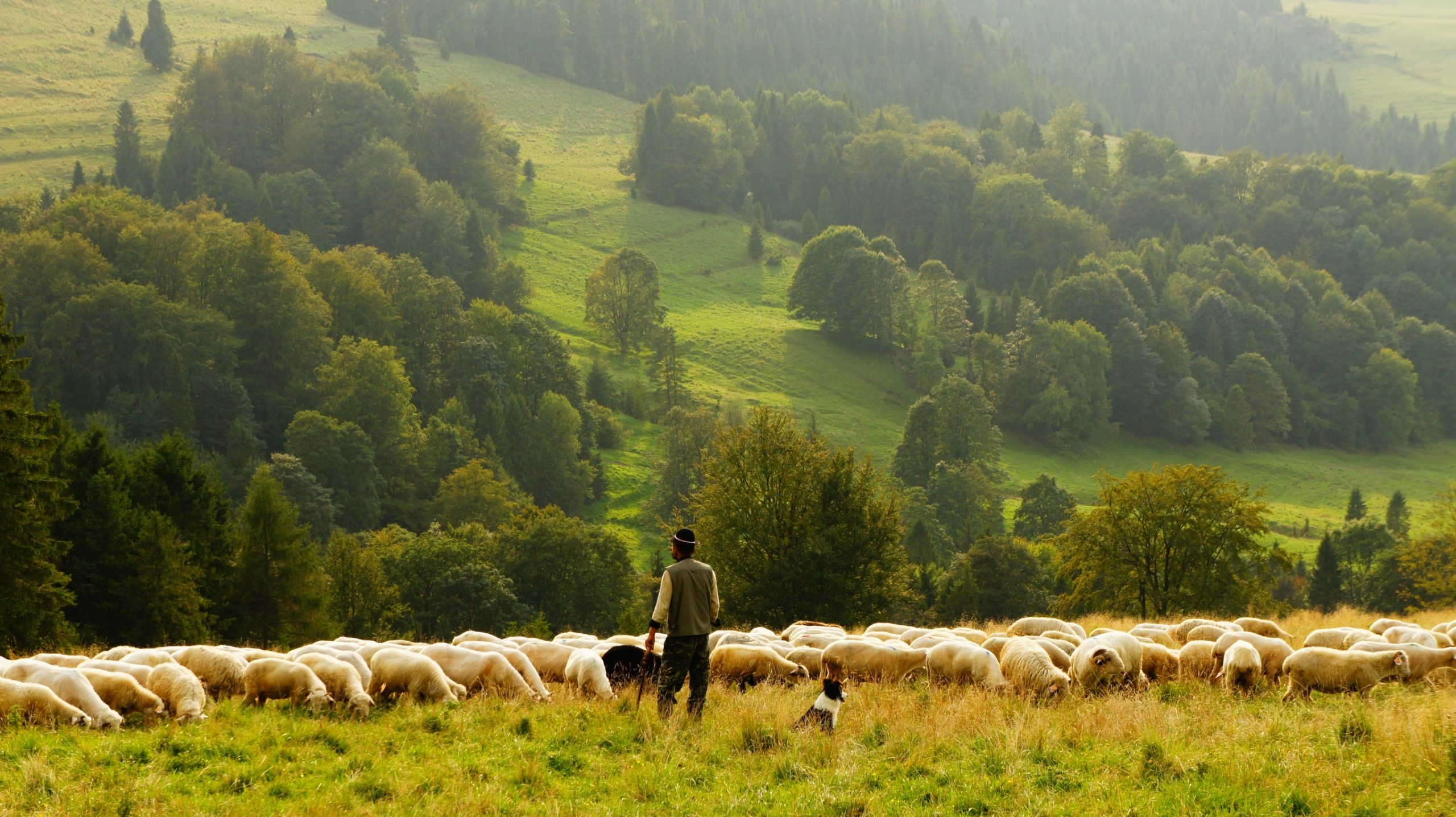
by Barbara Lane Geistfeld, D.V.M., LFL Regional Director of Texas
What do you know about sheep? Sheep were one of the very first animals domesticated by mankind. (Only dogs have been domesticated longer!) Records show them in Mesopotamia, the northern end of the fertile crescent in the valleys of the Tigris and Euphrates Rivers, thousands of years ago. The Patriarch Abraham was from Ur of the Chaldees, a city in that region, and, of course, he was a shepherd, as were his descendants. Isaac, Jacob, and David—perhaps the most famous shepherd of all time—earned their livelihoods herding sheep. The four “Ms” of animal husbandry—Meat, Milk, Manure, Money—sustain the shepherd. With sheep, one can add wool for additional benefits such as clothing and homes (including tents!).
Sheep have some obvious characteristics. They are flock animals and extremely gregarious, and they tend to stay together in their flock. They follow a dominance hierarchy which is why they follow a leader, whether another sheep or the shepherd. They tend to stick close to one another and become stressed if separated from the rest of the flock. When panicked, they scatter and flee. And, like some humans, sheep are food-oriented and can be led back to the flock with a tasty morsel. Who knew?
And finally, sheep are not as unintelligent as they look! Studies show them on a par with cattle, just below pigs. They communicate with each other by various sounds, and sight is also critical. When grazing, they often lift their heads to look around and make sure the others are near. They can recognize both sheep and human faces and remember them for years. And if they recognize faces, you can be sure they recognize the voice of the shepherd. If worked with patiently, sheep will even learn their own names and come to the shepherd when called by name.
Where am I going with all of this? The word “sheep” is in the Bible over 500 times! Shepherding is one of the bedrocks of Hebrew and Jewish culture—and Jesus was part of that culture. Those around him, no matter what their occupation, certainly understood sheep and analogies to sheep. Go back and read again the characteristics of this humble creature.
Over and over in the Scriptures, Jesus compares you and me to sheep—and Jesus Himself is the ultimate Shepherd. John 10 has a beautiful treatise on sheep—both four-legged and two-legged:
“But he who enters by the door is the shepherd of the sheep … The sheep hear his voice, and he calls his own sheep by name and leads them out. When he has brought out all his own, he goes before them, and the sheep follow him, for they know his voice …
“This figure of speech Jesus used with them, but they did not understand what he was saying to them. So Jesus again said to them, ‘Truly, truly, I say to you, I am the door of the sheep … If anyone enters by me, he will be saved and will go in and out and find pasture. The thief comes only to steal and kill and destroy. I came that they may have life and have it abundantly.
“I am the good shepherd. The good shepherd lays down his life for the sheep … I know my own and my own know me … And I have other sheep that are not of this fold. I must bring them also, and they will listen to my voice. So there will be one flock, one shepherd.’”
We would do well to remember the words of our Shepherd and to stick together with the true flock and not be panicked into scattering and fleeing. We should raise our heads often and make sure we are still with the right flock and the right Shepherd. We will surely prosper and find good pasture when we remember His face and His voice and follow only the One we know to be our Shepherd—the One who laid down His life for us and calls us by name. Listen to Him!
(Sources: www.Sheep101.info, Wikipedia/sheep)